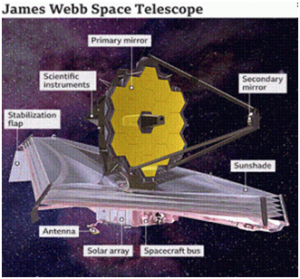THE POLITY AND GOVERNANCE
1.THE BAIL LAW AND SUPREME COURT CALL FOR REFORM
THE CONTEXT:Recently, the Supreme Court underlined that “there is a pressing need” for reform in the law related to bail and called on the government to consider framing a special legislation on the lines of the law in the United Kingdom.
THE EXPLANATION:
What is the ruling about?
- A two-judge Bench comprising Justices Sanjay Kishan Kaul and M MSundaresh issued certain clarifications to an older judgment delivered in July 2021 on bail reform (Satender Kumar Antil vs CBI). The 85-page ruling is essentially a reiteration of several crucial principles of criminal procedure.
- Referring to the state of jails in the country, where over two-thirds lodged are undertrials, the Supreme Court underlined that arrest is a draconian measure that needs to be used sparingly.
- “Of this category of prisoners, majority may not even be required to be arrested despite registration of a cognizable offense, being charged with offenses punishable for seven years or less. They are not only poor and illiterate but also would include women. Thus, there is a culture of offense being inherited by many of them,” the court said.
- Theoretically, the court also linked the idea of indiscriminate arrests to magistrates ignoring the rule of “bail, not jail” to a colonial mindset. The Code of Criminal Procedure (CrPC) was first drafted in 1882 and continues to be in use with amendments from time to time.
- “Our belief is also for the reason that the Code as it exists today is a continuation of the pre-Independence one with its modifications.
What is the law on bail?
The CrPC does not define the word bail but only categories offences under the Indian Penal Code as ‘bailable’ and ‘non-bailable’. The CrPC empowers magistrates to grant bail for bailable offences as a matter of right. This would involve release on furnishing a bail bond, without or without security. Non-bailable offences are cognisable, which enables the police officer to arrest without a warrant. In such cases, a magistrate would determine if the accused is fit to be released on bail.
|
What is the UK law? · The Bail Act of the United Kingdom, 1976, prescribes the procedure for granting bail. A key feature is that one of the aims of the legislation is “reducing the size of the inmate population”. The law also has provisions for ensuring legal aid for defendants. · The Act recognises a “general right” to be granted bail. Its Section 4(1) raises the presumption of bail by stating that the law applies to a person who shall be granted bail except as provided in Schedule 1 to the Act. · For rejecting bail, the prosecution must show that grounds exist for believing the defendant on bail would not surrender to custody, would commit an offence while on bail, or would interfere with witnesses or otherwise obstruct the course of justice; unless the defendant must be detained for his own welfare or protection; or in other circumstances. |
What has the Supreme Court held on reforms?
The court’s ruling is in the form of guidelines, and it also draws the line on certain procedural issues for the police and judiciary.
SEPARATE LAW FOR BAIL: The court underlined that the CrPC, despite amendments since Independence, largely retains its original structure as drafted by a colonial power over its subjects. The court made this point to signal that despite its rulings, structurally, the Code does not account for arrest as a fundamental liberty issue in itself.
- It also highlighted that magistrate do not necessarily exercise their discretionary powers uniformly.
- “Uniformity and certainty in the decisions of the court are the foundations of judicial dispensation. Persons accused with same offense shall never be treated differently either by the same court or by the same or different courts. Such an action though by an exercise of discretion despite being a judicial one would be a grave affront to Articles 14 and 15 of the Constitution of India,” the Court said.The court’s solution on this is the framing of a separate law that deals with the grant of bail.
INDISCRIMINATE ARRESTS: The court noted that the culture of too many arrests, especially for non-cognisable offences, is unwarranted. It emphasised that even for cognisable offences, arrest is not mandatory and must be “necessitated”.
- It held that lower courts must satisfy that these conditions are met and “Any non-compliance would entitle the accused for grant of bail”.
BAIL APPLICATION: “There need not be any insistence of a bail application while considering the application under Section 88, 170, 204 and 209 of the Code,” the court held.
- These sections relate to various stages of a trial where a magistrate can decide on release of an accused. These range from power of the magistrate to take bond for appearance (Section 88) to power to issue summons (Section 204). The Supreme Court held that in these circumstances, magistrates must routinely consider granting bail, without insisting on a separate bail application.
DIRECTION TO STATES: The SC also directed all state governments and Union Territories to facilitate standing orders to comply with the orders and avoid indiscriminate arrests. The CBI has already communicated earlier orders of the Court to special judges under its jurisdiction.
- Court also said that “We do feel that this would certainly take care of not only the unwarranted arrests, but also the clogging of bail applications before various Courts as they may not even be required for the offences up to seven years”.
VALUE ADDITION:
Types of Bail in India
Depending upon the sage of the criminal matter, there are commonly three types of bail in India:
- Regular bail- A regular bail is generally granted to a person who has been arrested or is in police custody. A bail application can be filed for the regular bail under sections 437 and 439 of CrPC.
- Interim bail– This type of bail is granted for a short period of time and it is granted before the hearing for the grant of regular bail or anticipatory bail.
- Anticipatory bail– Anticipatory bail is granted under section 438 of CrPC either by session court or High Court. An application for the grant of anticipatory bail can be filed by the person who discerns that he may be arrested by the police for a non-bailable offence.
What is default bail?
- Also known as statutory bail, this is a right to bail that accrues when the police fail to complete the investigation within a specified period in respect of a person in judicial custody. This is enshrined in Section 167(2) of the Code of Criminal Procedure where it is not possible for the police to complete an investigation in 24 hours, the police produce the suspect in court and seek orders for either police or judicial custody. This section concerns the total period up to which a person may be remanded in custody prior to the filing of the charge sheet.
- For most offences, the police have 60 days to complete the investigation and file a final report before the court. However, where the offence attracts a death sentence or life imprisonment, or a jail term of not less than 10 years, the period available is 90 days. In other words, a magistrate cannot authorise a person’s judicial remand beyond the 60-or 90-day limit.
- At the end of this period, if the investigation is not complete, the court shall release the person “if he is prepared to and does furnish bail”.
2.EXPLAINED: WHAT THE DRAFT MEDICAL DEVICES BILL SAYS — AND WHAT IT DOES NOT
THE CONTEXT:Recently, the Union Health Ministry released a draft of a proposed The Drugs, Medical Devices and Cosmetics Bill, 2022 to replace the existing The Drugs and Cosmetics Act, 1940, and several sets of Rules by which the industry is currently run.
THE EXPLANATION:
The draft focuses on regulating medical devices as a separate entity, makes provision for fines and imprisonment for injury and death related to clinical trials or investigations, and seeks to regulate e-pharmacies.
Online pharmacies
- No provisions to regulate online pharmacies exist in the 1940 law or any of the Rules. “Online pharmacies are currently working completely outside the law. Most of these websites have perhaps a licence for a physical shop or storage unit.
- In case of a violation, drug inspectors do not know under which provision of the law or Rule they can proceed against the websites, according to drugs organisation.
Clinical trials and investigations
- The draft Bill makes provisions for compensation to participants or their legal heirs for injury or death suffered in clinical trials and investigations for drugs and medical devices. The draft also lays the onus of providing medical management for any injury arising due to the trial on the investigators.
- There is a new provision for imprisonment, and fine amounting to double the compensation amount if the compensation is not paid. If the draft Bill becomes law, these provisions will be part of it, and will not be restricted to just clinical trial Rules.
- The draft Bill prohibits clinical trials or clinical investigations of drugs and medical devices without permission from the central licensing authority. While companies have to seek permission from the regulator to conduct trials even now, this is not specifically mentioned in the existing law.
- The draft provides for debarring the investigators and sponsors of a trial or investigation if the laid-down provisions are not followed.
- According to experts, this is not enough, and the draft Bill has some critical gaps.
Medical devices
- Under the ambit of medical devices defined by the draft Bill are diagnostic equipment, their software, implants, devices for assistance with disabilities, life support, instruments used for disinfection, and reagents or kits. The 1940 Act has medical devices as one of four categories of “drugs”.
- To take decisions on regulating medical devices, the draft Bill provides for creating a Medical Devices Technical Advisory Board on the lines of the existing drugs technical advisory board, with people who have technical knowledge of the engineering of these devices, and members of the industry.
- Other than officials of the Health Ministry, the board will have officials from the Department of Atomic Energy, Department of Science and Technology, Ministry of Electronics and Information Technology, Defence Research and Development Organisation, and experts from the fields of biomedical technology, biomaterials, and polymer technology.
However, drawing on the existing law on drugs, the draft Bill defines provisions for imprisonment or fines for “adulterated” or “spurious” medical devices. The draft states that a medical device will be considered to be adulterated if it is rusted, corroded, filthy, putrid, or decomposed, packed or stored in unsanitary conditions, contains harmful or toxic substances, or has any component or software removed making it unsafe.
The draft Bill deems a medical device to be spurious if it carries the label of a fictitious company or is purported to be of a manufacturer that has not manufactured it.
VALUE ADDITION: PRELIMS PERSPECTIVE
Drugs and Cosmetics Act, 1940
- The Act regulates the import, manufacture, and distribution of drugs in India.
- The primary objective of the act is to ensure that the drugs and cosmetics sold in India are safe, effective and conform to state quality standards.
- It was initially known as the Drug Act and was passed in 1940 and after several amendments is known as the Drugs and Cosmetics Act, 1940.
About DTAB
- The DTAB is the highest statutory decision-making body on technical matters related to drugs.
- It is constituted as per the Drugs and Cosmetics Act,1940 and is a part of the CDSCO under the Ministry of Health and Family Welfare.
Classification of medical devices
- The classification of the medical device rules along with the regulatory approval and registration by the CDSCO is under the control of the Drug Controller General of India (DCGI).
- All medical devices in India follow a regulatory framework based on the drug regulations under the Drugs and Cosmetics Act, 1940 and the Drugs and Cosmetic Rules, 1945.
The newly notified rules further classify medical devices in four categories, Class A, Class B, Class C, and Class D.
| Sl. No | Classes of Medical Device | Type of Medical Device | Examples |
| 1. | Class A | Low-risk | absorbent cotton balls, alcohol swabs, etc. |
| 2. | Class B | Moderate-low risk | thermometer, BP monitoring device, etc. |
| 3. | Class C | Moderate-high risk | Implants, etc. |
| 4. | Class D | High-risk | heart valve, etc. |
THE ECONOMIC DEVELOPMENTS
3.RBI NOD TO ALLOW INTERNATIONAL TRADE SETTLEMENTS IN RUPEES MEANS
THE CONTEXT:The Reserve Bank of India announced its decision to allow trade settlements between India and other countries in rupees. While the move is seen to benefit trading primarily with Russia, it is also likely to help check dollar outflow and slow rupee depreciation to a ‘very limited extent’.
THE EXPLANATION:
How will the model work?
To settle trade transactions with any country, banks in India will open Vostro accounts (an account that a correspondent bank holds on behalf of another bank — for example HSBC vostro account is held by SBI in India) of correspondent bank/s of the partner country for trading. Indian importers can pay for their imports in rupee into these accounts. These earnings (from imports) can then be used to pay Indian exporters in Indian rupee.
How does the current system payment work?
As of today, if a company exports or imports, transactions are always in a foreign currency (excluding with countries like Nepal and Bhutan). So in case of imports, the Indian company has to pay in a foreign currency (mainly dollars and could also include currencies like pounds, Euro, yen etc.). The Indian company gets paid in foreign currency in case of exports and the company converts that foreign currency to rupee since it needs rupee for its needs, in most of the cases.
Which countries are expected to use this new model?
- While the RBI order has not overtly said so, this arrangement is likely to be used only for Russia.
- There are sanctions on Russia post the Ukraine war and the country is off the SWIFT system (system used by banks for payments in foreign currency). This means payments do not have to be made in foreign currency and this arrangement would help both Russia and India”.
Can this be extended to other countries?
- According to economists, that it’s highly unlikely that it will be extended to other countries. India currently allows payment in rupees to countries like Nepal and Bhutan.
- “We may want to, but others may not accept it as they may need foreign currency to pay for their own imports,” adding that Sri Lanka may also want us to pay in dollars or any other foreign currency.
Will it help arrest the fall of Indian rupee?
- It will help the rupee to a ‘very limited extent’. Rupee, like all global currencies, has been depreciating and the RBI has been using country’s foreign exchange reserves to control the fall. Despite all its attempts, the rupee, on Tuesday, hit a new low of 79.60 against the dollar. So far in 2022, the rupee has lost over 6.4 percent against the dollar.
THE SCIENCE AND TECHNOLOGY
4.NEW CO-DOPANTS IDENTIFIED CAN CREATE BETTER PERFORMING AND MORE STABLE SOLAR CELLS
THE CONTEXT:Scientists have identified co-dopants that can increase the photovoltaic performance of transparent metal oxides such as ZnO, In2O3 and SnO2 thereby creating potential for more efficient, better performing and more stable solar cells.
THE EXPLANATION:
- In recent years solar cell technology has achieved tremendous growth as sustainable source of energy. Energy generation and storage being the need of the hour, many efforts are being made around the world to develop cost-effective options.
- Perovskites are a leading candidate for eventually replacing siliconas the material of choice for solar panels. Perovskite solar cell consists of a perovskite layer as the light absorber, sandwiched between the electron transport layer (ETL) coated with transparent conducting glass and hole transport layer (HTL) coated with a metal back contact electrode.
- A research team from, Alagappa University group focused on the electron transport layer of solar cell devices which is made up of transparent metal oxides. Transparent metal oxides such as ZnO, In2O3 and SnO2 showed excellent electrical and optical properties.
- The team explored the role that effective dopant can play in improving the efficiency of Tin oxide (SnO2) as an efficient transparent metal oxide for solar devices. SnO2 can be prepared at low temperatures and is relatively stable, but the functional properties such as electrical conductivity, optical transparency, and band alignment with the perovskite of the SnO2 are not sufficient to compete with commercial solar cells.
- Cross-sectional morphologies of Perovskite films that had been prepared were analyse dutilising Field emission Scanning Electron Microscopy, while elemental and chemical characteristics were examined using X-ray photoelectron spectroscopy (XPS, Kratos AXIS Supra) supported by DST- Promotion of University Research and Scientific Excellence (PURSE). The study concluded that perovskite materials-based solar cells are cost-effective compared to commercial silicon-based solar cells.
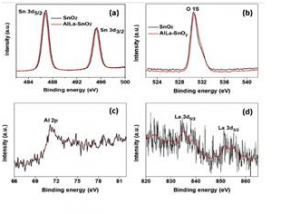
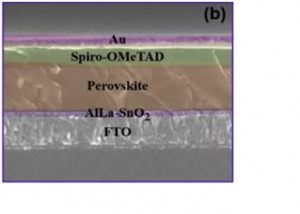
VALUE ADDITION:
- Solar cells are semi-conductor devices which use sunlight to produce electricity. They are manufactured and
 processed in a similar fashion as computer memory chips. Solar cells are primarily made up of silicon which absorbs the photons emitted by sun’s rays. The process was discovered as early as 1839. Silicon wafers are doped and the electrical contacts are put in place to connect each solar cell to another.
processed in a similar fashion as computer memory chips. Solar cells are primarily made up of silicon which absorbs the photons emitted by sun’s rays. The process was discovered as early as 1839. Silicon wafers are doped and the electrical contacts are put in place to connect each solar cell to another. - The resulting silicon disks are given an anti-reflective coating. This coating protects sunlight loss. The solar cells are then encapsulated and placed in an aluminium frame. The process requires continuous monitoring to ensure quality control over a period of time. After the manufacturing process is complete they undergo final test to check their efficiency under normal conditions
Connect the dots:
POINTS TO REMEMBER:
SECI is the only Public Sector Undertaking of the Union government working on solar energy and is currently responsible for the development of the entire renewable energy sector.
- The country’s installed Renewable Energy (RE) capacity stands at 150.54 GW (solar: 48.55 GW, wind: 40.03 GW, Small hydro Power: 4.83, Bio-power: 10.62, Large Hydro: 46.51 GW) as on 30th Nov. 2021 while its nuclear energy based installed electricity capacity stands at 6.78 GW.
- India has the 4th largest wind power capacity in the world.
- This brings the total non-fossil based installed energy capacity to 157.32 GW which is 40.1% of the total installed electricity capacity of 392.01 GW.
- Push to RE in Budget 2022-23:To facilitate domestic manufacturing for the ambitious goal of 280 GW of installed solar capacity by 2030, an additional allocation of 19,500 crore for Production Linked Incentive for manufacture of high efficiency modules will be made.
5.CONNECTING THE DOTS BETWEEN VIRUS INFECTION AND PROGRESS OF BRAIN CANCER
THE CONTEXT:Scientists have found that cancer-causing virus Epstein Barr Virus (EBV) can infect the neuronal cells and drive various changes in biomolecules such as fatty acids, carbohydrates, and protein components, leading to diseases of the central nervous system as well as brain cancer.
| Fund for Improvement of S&T Infrastructure in Universities and Higher Educational Institutions (FIST):
The Scheme “Fund for Improvement of S&T Infrastructure (FIST)” is intended to provide basic infrastructure and enabling facilities for promoting R&D activities in new and emerging areas and attracting fresh talents in universities & other educational institutions. It is considered as complimentary support for enabling Departments/ Centres/ Schools/ Colleges to pursue research activities more effectively and efficiently. |
THE EXPLANATION:
- A research team from IIT Indore utilized the Raman microspectroscopy technique, supported by the Department of Science and Technology (DST) under FIST scheme to explore the possible impacts of a cancer-causing virus on brain cells. The technique based on Raman Effect is a simple, cost-effective tool to find sensitive chemical changes in biological samples.
- The study, published in the journal ACS Chemical Neuroscience, showed that there could be timely and gradual changes in various biomolecules in the neuronal cells under viral influence. Additionally, these changes were distinct when compared to the changes observed in other supportive brain cells (that is, astrocyte and microglia).
- “The research work aids in the understanding of EBV-mediated biomolecular changes in the various compartments of the central nervous system leading to better understanding of nervous system diseases”.
- According to scientists,study is also helpful in establishing the advantages of Raman microspectroscopy, a cost-effective and non-invasive technique, in carrying out studies on virus-associated cellular complications in clinical settings. It could provide an upper hand in analysing clinical samples in comparison to other techniques, which require advanced setups for studying the virus-associated changes in cells, tissues, and organs.

VALUE ADDITION:
RAMAN SPECTROSCOPY:
- Raman Spectroscopy is a non-destructive chemical analysis technique which provides detailed information
 about chemical structure, phase and polymorphy, crystallinity and molecular interactions. It is based upon the interaction of light with the chemical bonds within a material.
about chemical structure, phase and polymorphy, crystallinity and molecular interactions. It is based upon the interaction of light with the chemical bonds within a material. - Raman is a light scattering technique, whereby a molecule scatters incident light from a high intensity laser light source. Most of the scattered light is at the same wavelength (or color) as the laser source and does not provide useful information – this is called Rayleigh Scatter.
- However a small amount of light (typically 0.0000001%) is scattered at different wavelengths (or colors), which depend on the chemical structure of the analyte – this is called Raman Scatter.
NASA’S WEBB TELESCOPE AND THE FIRST LOOK AT THE UNIVERSE FROM 13 BILLION YEARS AGO
THE CONTEXT:The United States space research agency NASA said in a release that its James Webb Space Telescope (JWST) has produced the deepest and sharpest infrared image of the distant universe that has ever been seen, heralding a major event in astronomy. The JWST is the largest and most powerful telescope ever built.
THE EXPLANATION:
According to the sources,Thousands of galaxies — including the faintest objects ever observed in the infrared — have appeared in Webb’s view for the first time, all captured in a relatively small area. “This slice of the vast universe covers a patch of sky approximately the size of a grain of sand held at arm’s length by someone on the ground”.
What can be seen in the image?
- Calling it “Webb’s First Deep Field”, NASA said the image shows galaxies that were once invisible to them. The image shows shining objects packed together in hues of blue and orange. Swirling, faraway galaxies — similar to how the Milky Way looks — are also visible.
- According to NASA “Light travels at 186,000 miles per second. And that light that we are seeing on one of those little specks has been travelling for over 13 billion years”.

About James Webb Space Telescope (JWST or Webb)
JWST is an engineering marvel comparable to the earth-based Event Horizon Telescope that produced the photograph of the black hole, or the LIGO that detected the gravitational waves. It is widely expected to unveil many secrets of the universe, particularly those related to the formation of stars and galaxies in the early period — the first few hundred million years — after the Big Bang.
- It has been jointly developed by NASA, Canadian Space Agency (CSA) and the European Space Agency (ESA). As NASA’s flagship astrophysics mission, it is planned to succeed the Hubble Space Telescope.

- The primary mirror of JWST that is, Optical Telescope Element, comprises of 18 hexagonal mirror segments. These segments are made up of gold-plated beryllium.
Objectives and functions of the telescope:
- It will look deeper into the cosmos –and thus further back in time – than is possible with Hubble.
- It will do this with a much bigger mirror (6.5m in diameter versus 2.4m) and instruments that are tuned to the infrared.
- Scientists hope this set-up can detect the light from the very first population of stars in the Universe to switch on more than 13.5 billion years ago.
Where is it placed?
The James Webb Space Telescope will not be in orbit around the Earth, like the Hubble Space Telescope is – it will actually orbit the Sun, 1.5 million kilometres (1 million miles) away from the Earth at what is called the second Lagrange point or L2.
THE PRELIMS PRACTICE QUESTIONS
QUESTION OF THE DAY
Q.Consider the following statements in the context of types of bails in India:
- A regular bail is generally granted to a person who has been arrested or is in police custody.
- Anticipatory bail is granted under section 438 of CrPC either by session court or High Court
- Statutory bail, is a right to bail that accrues when the police fail to complete the investigation within a specified period in respect of a person in judicial custody.
Which of the above statements is/are correct?
a)1 and 2 only
b)2 and 3 only
c)1 and 3 only
d)1,2 and 3
ANSWER FOR 12TH JULY 2022
ANSWER: B
EXPLANATION
Horizon scanning
- It is a technique which seeks to identify novel but poorly known issues that are likely to become important consequences over the next decade.
- The researchers of the study argue that this methodology is meant to “primarily act as signposts, putting focus on particular issues and providing support for researchers and practitioners to seek investment in these areas” before they have a major impact.
- It is also an effective way of assembling experts from diverse subject areas to examine common issues and formulate more comprehensive solutions.
- The horizon scan method has been previously used to identify issues that are now known to have universal environmental impact. A scan from 2009 gave an early warning about the danger that microplastics (tiny plastic debris smaller than 5 mm) pose to marine environments. Since then, countries such as the US and UK have banned cosmetics from containing microbeads.

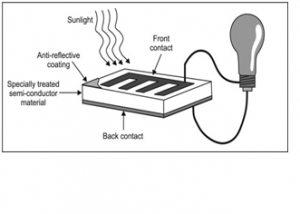 processed in a similar fashion as computer memory chips. Solar cells are primarily made up of silicon which absorbs the photons emitted by sun’s rays. The process was discovered as early as 1839. Silicon wafers are doped and the electrical contacts are put in place to connect each solar cell to another.
processed in a similar fashion as computer memory chips. Solar cells are primarily made up of silicon which absorbs the photons emitted by sun’s rays. The process was discovered as early as 1839. Silicon wafers are doped and the electrical contacts are put in place to connect each solar cell to another.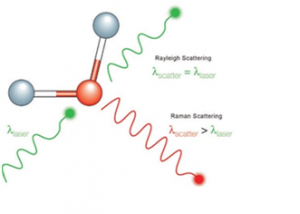 about chemical structure, phase and polymorphy, crystallinity and molecular interactions. It is based upon the interaction of light with the chemical bonds within a material.
about chemical structure, phase and polymorphy, crystallinity and molecular interactions. It is based upon the interaction of light with the chemical bonds within a material.
